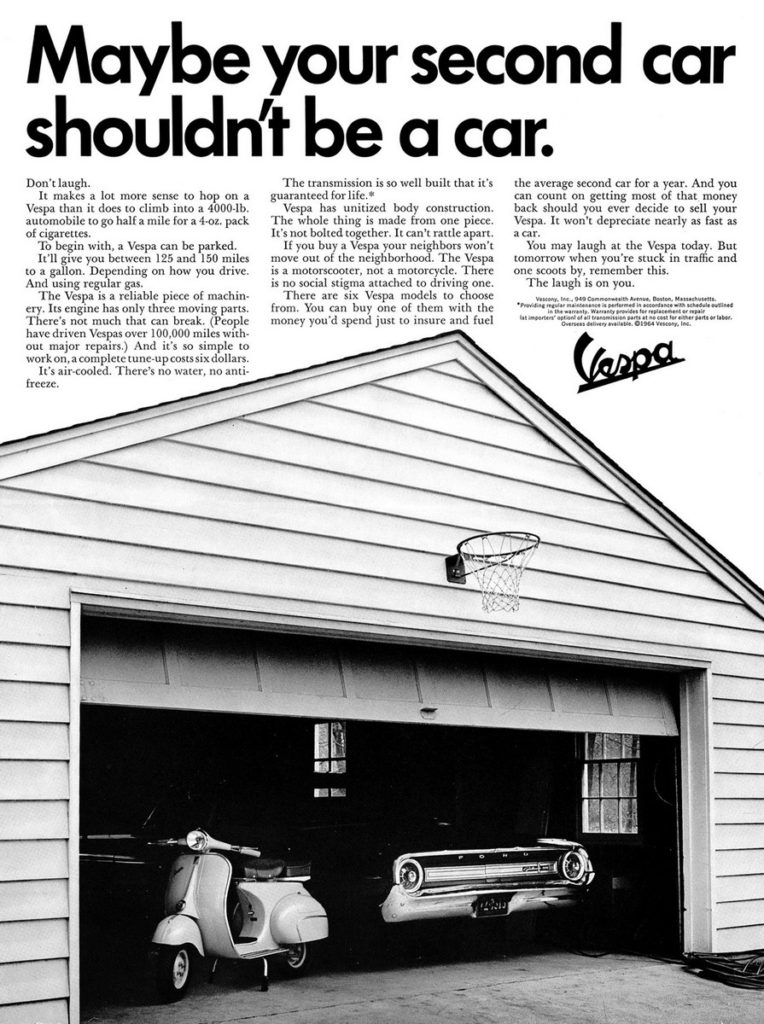April 23, 2025, San Miniato (Pisa)
April 23rd — an iconic date for all enthusiasts of motors and Italian design. Every year on this day, we celebrate the registration of the Vespa patent, filed in 1946 by the Piaggio company. It marked the birth of what would become the world’s most famous “motorcycle with a rational arrangement of components and elements, featuring a frame combined with fenders and a casing that encloses the entire mechanical part.”
An idea born out of necessity

The conflict was not yet over, but Enrico Piaggio was already thinking about rebuilding.
The bombings had destroyed part of the Piaggio facilities. Until then, the company had been synonymous with trains, airplanes, and military vehicles. But post-war Italy was changing—along with the priorities of its people. Enrico Piaggio understood this immediately: the future no longer lay in wartime production. To stay in the market, the company needed to shift quickly, and he saw the answer in civilian mobility. But how?
All of Italy was on its knees: roads were in ruins, money was scarce, and people longed to move and feel alive again—but fuel was hard to find. Piaggio envisioned a vehicle for individual mobility: simple and agile, low-cost, fuel-efficient, sturdy, and easy to drive—even on the war-torn roads of the postwar era.
Enrico Piaggio meets Corradino D’Ascanio.

In the 1930s, an engineer named Corradino D’Ascanio designed one of the world’s first functioning helicopters, the D’AT3, and worked with Piaggio on the development of airplanes and engines for the Royal Air Force.
Enrico Piaggio had known him for a long time and held him in high regard: an engineer with strong personal ideas, outside the traditional framework. Moreover, Corradino D’Ascanio hated motorcycles (he found them dirty, uncomfortable, and difficult to ride), and Enrico chose him precisely for this reason—he wanted someone who would rethink everything from scratch, and he knew D’Ascanio was the one to do it.
Corradino accepts the challenge, on his own terms.

D’Ascanio didn’t like “dirty” engines, greasy chains, or the complications of motorcycles. His approach was that of an aerospace engineer: precision, lightness, efficiency, and ease of use. He accepts the challenge: he designs a motorcycle by removing the parts he hated.
- No chain
- Gear shift moved to the handlebar
- Self-supporting sheet metal structure
- Lightweight and easy to carry
- More comfortable seating
- Easy to clean
- Light pedal start
- Flat footrest (allowed easy mounting and dismounting, even with a skirt)
ChatGPT ha detto:
Enrico Piaggio wanted a vehicle for everyone: men, women, young people, workers, and students. In a post-war Italy striving to rebuild, giving women mobility—who had previously stayed at home—was a revolutionary act. The Vespa soon became a symbol of female emancipation.
Paperino MP5: the first prototype

The first result was the MP5 prototype, Paperino, built in 1944-45 at Piaggio’s Biella facilities. Its main features were:
- Tubular frame with external metal panels
- Small, easy-to-remove wheels (like those of an airplane trolley)
- Side-mounted engine, to make access to the rear wheel easier
- Handlebar-mounted gear shift, to simplify riding
- Front shield, to protect from mud and splashes
It was already a very innovative idea, but aesthetically it didn’t convince Enrico Piaggio. The shape was somewhat “awkward,” so much so that it was ironically nicknamed “Paperino” (like the Disney duck).
The design, considered too clumsy and lacking elegance by Enrico Piaggio, was set to be improved. At this point, Corradino D’Ascanio focused on the mechanical and engineering aspects, while Mario D’Este entered the scene to redefine the lines, enhance the appearance, and make the vehicle more harmonious, proportionate, and appealing.
Mario D’Este: the designer

Mario D’Este was an industrial designer at Piaggio, already involved in aircraft design in the previous years. He was used to working with functional, aerodynamic, and clean shapes, but he also had a keen eye for aesthetics.
Mario D’Este redesigns:
- The body with softer lines and continuous curves
- The central footrest slimmer (the famous “Vespa waist”)
- The front fender more integrated
- The position and tilt of the handlebars
Thanks to his intervention, the MP6 was no longer just a practical vehicle, but an elegant and modern object. When Enrico Piaggio saw it, impressed by its shape and sound, he said:
“Sembra una vespa!”
And that’s how the name Vespa was born.

???? The Vespa, a scooter that tells a story
The birth of the Vespa is not just an industrial story: it’s a symbol of rebirth, creativity, and Italian ingenuity in the postwar era. From Corradino D’Ascanio’s technical insight to Mario D’Este’s elegant design, and through Enrico Piaggio’s entrepreneurial vision, that small scooter revolutionized mobility — and the style — of an entire generation.
In 1946, no one could have imagined that that buzzing “vespa” would become a global icon, loved in every corner of the world. And yet, here it is today, still telling the world a uniquely Italian story made of passion, design, and freedom on two wheels.

Did you know that during the 2024 Vespa World Days in Pontedera, a Vespa was created with Vegetable-Tanned Leather from Tuscany?
The various components made of Vegetable-Tanned Leather from Tuscany were handcrafted and applied to the model, which remained on display at the Piaggio Museum throughout the Vespa World Days.




